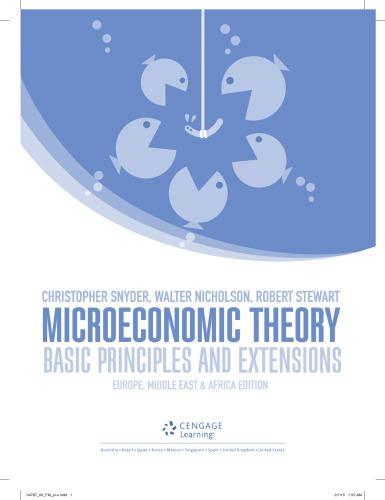14.8 More on the welfare analysis of quality choice An alternative way to study the welfare properties
Question:
14.8 More on the welfare analysis of quality choice An alternative way to study the welfare properties of a monopolist’s choices is to assume the existence of a utility function for the customers of the monopoly of the form utility = U(Q, X ), where Q is quantity consumed and X is the quality associated with that quantity. A social planner’s problem then would be to choose Q and X to maximise social welfare as represented by SW = U(Q, X ) − C(Q, X ).
a. What are the irst-order conditions for a welfare maximum?
b. The monopolist’s goal is to choose the Q and X that maximise π = P(Q, X ) · Q − C(Q, X ). What are the irst-order conditions for this maximisation?
c. Use your results from parts
(a) and
(b) to show that, at the monopolist’s preferred choices,
∂SWQ /∂Q > 0. That is, as we have already shown, prove that social welfare would be improved if more were produced. Hint: Assume that �U/�Q = P.
d. Show that, at the monopolist’s preferred choices, the sign of �SW/�X is ambiguous – that is, it cannot be determined (on the sole basis of the general theory of monopoly) whether the monopolist produces either too much or too little quality.
Step by Step Answer:

Microeconomic Theory Basic Principles And Extensions
ISBN: 9781473729483
1st Edition
Authors: Christopher M Snyder, Walter Nicholson, Robert B Stewart






